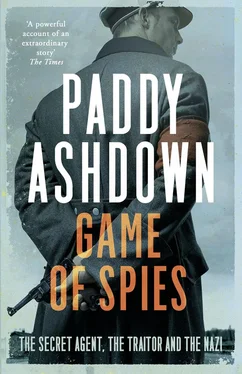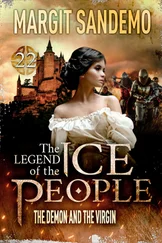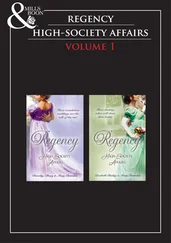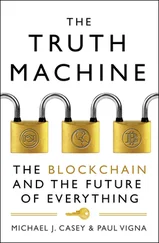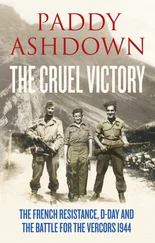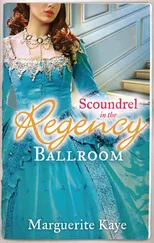
William Collins
An imprint of HarperCollins Publishers
1 London Bridge Street
London SE1 9GF
www.WilliamCollinsBooks.com
First published in Great Britain by William Collins 2016
Text © Paddy and Jane Ashdown Partnership 2016
Extract from ‘As I Walked Out One Evening’ © the Estate of W. H. Auden,
reproduced by permission of Curtis Brown Ltd
While every effort has been made to trace the owners of copyright material reproduced herein, the author and publishers would like to apologise for any omissions and will be pleased to incorporate missing acknowledgements in any future editions.
Maps by John Gilkes
Cover photograph © CollaborationJS / Trevillion Imanages
A catalogue record for this book is available from the British Library
All rights reserved under International and Pan-American Copyright Conventions. By payment of the required fees, you have been granted the non-exclusive, non-transferable right to access and read the text of this e-book on screen. No part of this text may be reproduced, transmitted, down-loaded, decompiled, reverse engineered, or stored in or introduced into any information storage and retrieval system, in any form or by any means, whether electronic or mechanical, now known or hereinafter invented, without the express written permission of HarperCollins.
Source ISBN: 9780008140847
Ebook Edition © September 2016 ISBN: 9780008140830
Version: 2017-04-11
To the young men and women whose lives were changed in Room 055 of the Old War Office Building in London – and ended in the death camps of Nazi Europe.
Cover
Title Page
Copyright
Dedication
Epigraph
Introduction
Author’s Note
Maps
Prologue: The Execution
1 Bordeaux – Beginnings
2 Roger Landes
3 Friedrich Dohse
4 André Grandclément
5 A Happy Man and a Dead Body
6 Scientist Gets Established
7 A Visitor for David
8 Crackers and Bangs
9 Businesses, Brothels and Plans
10 ‘Je suis fort – Je suis même très fort’
11 A Birthday Present for Friedrich
12 The Wolf in the Fold
13 The Trap Closes
14 The Deal
15 Arms and Alarms
16 Progress and Precautions
17 The Battle of Lestiac
18 Maquis Officiels
19 Lencouacq
20 Of Missions and Machinations
21 Crossing the Frontier
22 Cyanide and Execution
23 Aristide Returns
24 ‘I come on behalf of Stanislas’
25 ‘Forewarned is Forearmed’
26 ‘This Poisoned Arrow Causes Death’
27 A Deadly Charade
28 The Viper’s Nest
29 Two Hours to Leave France
30 Nunc Dimittis
Epilogue: Post Hoc Propter Hoc
Acknowledgements
Dramatis Personae
Notes
Select Bibliography
Picture Section
Index
About the Author
Also by Paddy Ashdown
About the Publisher
‘O look, look in the mirror,
O look in your distress:
Life remains a blessing
Although you cannot bless.
‘O stand, stand at the window
As the tears scald and start;
You shall love your crooked neighbour
With your crooked heart.’
It was late, late in the evening,
The lovers they were gone;
The clocks had ceased their chiming,
And the deep river ran on.
From ‘As I Walked Out One Evening’
W. H. Auden
The three main characters of this book – Roger Landes, André Grandclément and Friedrich Dohse – appeared as fleeting shadows in my book A Brilliant Little Operation , the story of the ‘Cockleshell Heroes’ raid on Bordeaux in 1942. And that’s the way they would have remained had it not been for a chance email from a friend. Richard Wooldridge, who I had got to know while researching my Cockleshell heroes book, runs the remarkable little Combined Services Military Museum at East Maldon in Essex, of which I am a sometime patron. He had been gifted some documents which had come to light after the death of the owner of a house called ‘Aristide’ in Liphook, Hampshire. The papers had first been passed to a retired gentleman in the Isle of Wight, who asked Richard if his museum could provide a home for them.
Recognising the name ‘Aristide’ from the work we had done together, Richard contacted me and asked if I would be interested. I was, but, due to pressure of work could not visit the museum myself to look at the archive. So my colleague and collaborator in this book, Sylvie Young, made the journey to East Maldon and brought back around 400 photographs of letters and papers from the museum. It soon became clear that what we had was the personal archive of one of the Second World War’s most remarkable secret agents – Roger Landes.
And that is how this book began.
Since tracing Tito’s progress across the mountains of Bosnia (mostly on foot) and reading the remarkable accounts of F. W. D. Deakin and Fitzroy Maclean, who marched with Tito’s partisans, I have always been fascinated by that part of the Second World War in which Britain supported, fostered, and sometimes even created, bands of ‘freedom fighters’ (the Germans called them ‘terrorists’) dedicated to the liberation of occupied Europe.
Looking back today, it seems to me extraordinary that our besieged little country commited so many of its young men and women and so much of its resources to secret and extremely hazardous operations to free the countries of Europe, which we have now chosen to be no part of. It seems extraordinary that a nation which today does less than any other member of the European Union to help those fleeing the misery of war, was, so short a time ago, their only refuge. After the shock of the Referendum result, I still cannot bring myself to believe that our country, which has now turned its back on solidarity with our European neighbours, was then so much their last hope that, from the alpine pastures of Norway to the mountaintops of Greece, those desperate for freedom from every nation in Europe gathered on moonlit nights to listen for the tiny reverberation in the air which would tell them that the dark shadow of an RAF Halifax from London would shortly pass over them, with its largesse of weapons and its message that they were not alone.
Of course, I know that that is the romance of the story. I know that there is more to it than that. There are legends, and myths, and very black deeds – as well as brilliantly shining ones; and cowardice along with courage, and stupidity too, and vanity – a lot of vanity – and, it must be said, a good deal of betrayal as well. How could it be otherwise, since the basic ingredient of these stories is how ordinary, untrained, unsifted, unselected and unprepared individuals faced the great questions of life and death, which most of us have never had to face in our carefully pasteurised, cotton-wool worlds?
Fortunately, there is now a new mood amongst historians of the Resistance – and especially the French Resistance. A much more granular picture is emerging. The role of women is, at last, coming to light. The failures and betrayals are being analysed, as well as the triumphs, and a much more objective view about the overall achievements – and lack of them – is beginning to appear. This is especially so in France, where the fashion for debunking the Resistance may now even be distorting the picture in the opposite direction.
Читать дальше
